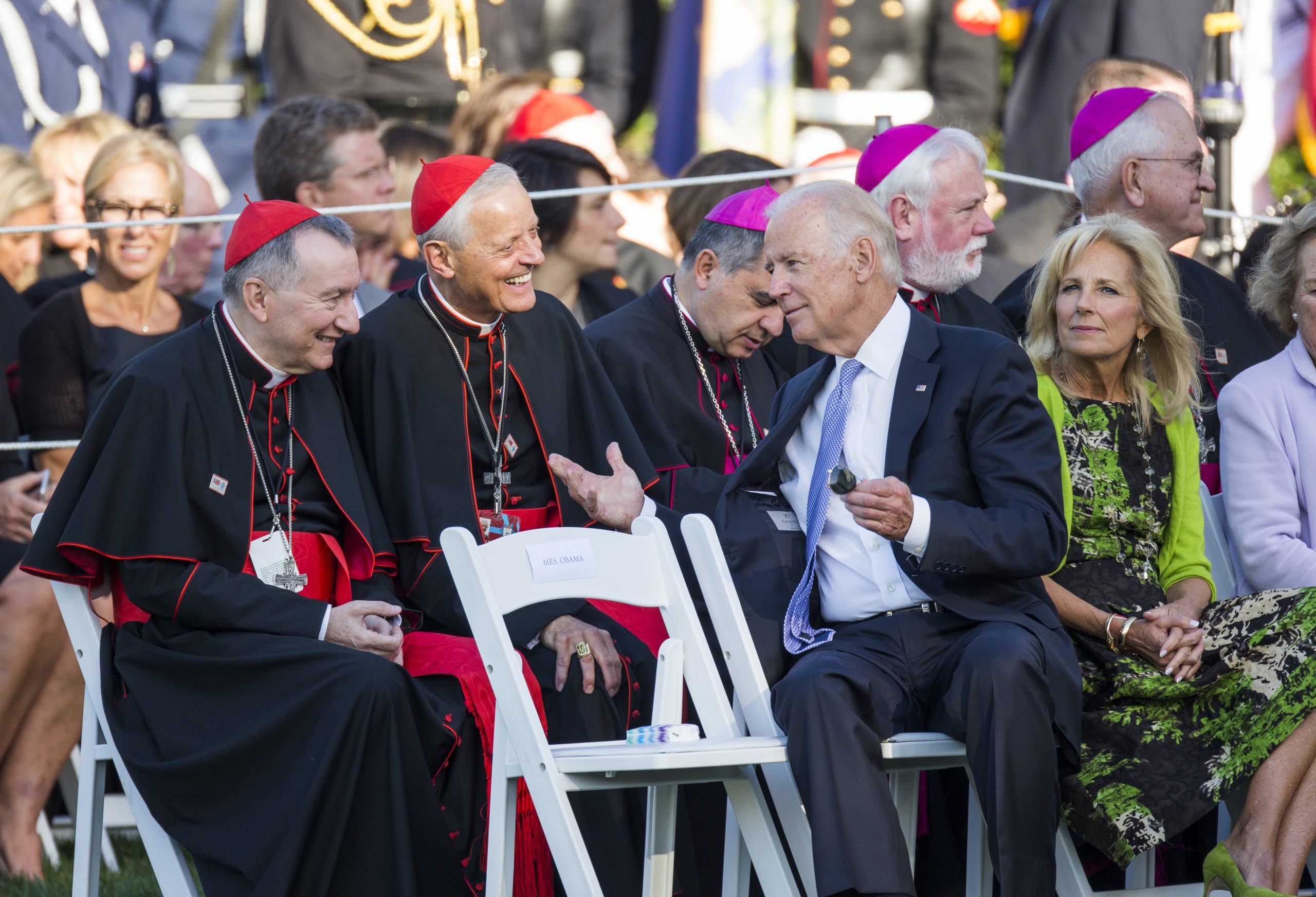From JFK to Biden: How the Catholic Presidency Changed

When the United States elected John F. Kennedy as its first Roman Catholic president in 1960, my father was 12 years old. He spent the weeks before the election calling random numbers from the local phone book and impersonating a political pollster. Then, if the suckers bought it, he’d ask if they were scared JFK would tell national security secrets to the pope.
A few weeks later, 80 percent of Catholic voters cast their ballots for Kennedy. Joe Biden, our second Catholic president, didn’t even come close to that number.
Before Kennedy, Catholics did not vote so monolithically. True, FDR had equaled JFK’s share of the Catholic vote in 1936, but this anomaly is explained by his landslide victory, with over 60 percent of the vote, and his “demagogic” appeal to the ethnic working classes.
Here’s a more typical example: Eisenhower’s 1952 and 1956 campaigns netted him 46 and 52 percent of the Catholic vote, respectively, according to data compiled by the Center for Applied Research in the Apostolate. Right down the middle.
Elections after Kennedy (and Johnson) produced similar results. Reagan got 58 percent of the Catholic vote in 1984, and that’s the closest any candidate has come to replicating Kennedy’s success. Even the Catholic John Kerry only got 52 percent. In 2020, Catholic voters got another chance to cast a ballot for a member of their own church. But Biden’s Catholicism, like Kerry’s and unlike JFK’s, didn’t even move the needle. Biden and Trump split the Catholic vote 51/49.
Why? What changed between 1960 and 2020 (or 2004)? I would propose two answers that are really the same answer:
First, politics has become America’s religion.
Plenty has been written on that subject, but it’s worth noting that in 1958, almost three-quarters of those polled didn’t care which political party their daughter’s future spouse belonged to. That number was down to 45 percent by 2016. In roughly the same timeframe, the rate of interfaith marriages tripled.
Second, Catholics have lost the distinctive identity that helped them resist the temptation to subordinate faith to politics.
I grew up near Pittsburgh, where “Catholic” was nearly synonymous with the working-class immigrants who, despite their poverty, built grand churches, closed ranks against religious bigotry, and anchored their identities in faith. No more. As Catholic journalist Ross Douthat writes, their “Catholic exceptionalism… dissolved into an unexceptional Americanism.” As Italians and Poles moved from the margins into the American mainstream, they were swallowed up by America’s all-consuming partisan divides.
The days when my adolescent dad’s victims thought John XXIII could guilt Kennedy into coughing up the nuclear codes were a simpler time. Back then, Catholics loved the pope and Protestants were wary of him. Easy. In 20th-century America, however, someone’s opinion of the man in the Vatican is a far less surefire indicator of religion. Godless progressives applaud when Pope Francis criticizes capitalism, while right-wing Catholic conspiracy theorist John Zmirak has his readers half-convinced that the pontifex is a card-carrying Communist. Conservative Catholics now have more in common with conservative evangelicals than with their liberal co-religionists.
This explains why “the Catholic vote” no longer exists in any meaningful sense, but it doesn’t explain why Catholics split just as evenly for Adlai Stevenson and Ike as for Trump and Hillary.
A recent New York Times article may have the answer to that. The author, Elizabeth Bruenig, argues that the old breed of Catholic voters rejected many of the unstated premises that the American right and left shared. Some Catholics would vote for one party, some for the other—but because of their Church’s deep roots in the pre-Enlightenment world they never felt at home in either. They were Catholics first and Democrats or Republicans second.
That’s why the Catholic vote swung 28 points when Kennedy came along.
Neither Biden nor Kennedy articulated a Catholic political vision that transcended American partisanship. Both were, essentially, garden-variety Democrats for their time, but Kennedy had a twofold advantage: He didn’t have to weigh in on a polarizing abortion debate, and he benefitted from a still-vibrant sense of Catholic solidarity.
In other words, Catholic voters in the 1950s split their vote because they didn’t fit into the American two-party system. Catholic voters in 2020 split their vote because they fit into that system far too well. The result may be the same, but the reason matters.
All of us should be alarmed by how we’ve reduced every aspect of life to partisan politics. The Church’s social teaching should empower American Catholics to think outside that box and breathe new life into our politics. They have the opportunity to mingle anti-capitalism with anti-Marxism, care for immigrants and refugees with a rejection of shallow multiculturalism, climate activism with contempt for the eugenics into which that movement so often degenerates. The platform of the American Solidarity Party lays out such a program in all its glorious contradictions.
I’m not saying I’d be glad if 80 percent of Catholics had voted for Biden, but the fact that they didn’t reveals that a Catholic solidarity has been lost, and with it, any chance of a uniquely Catholic vision for American politics. Another lump of particularism has liquified in the American melting pot, and we are all poorer for it.
This piece initially neglected to mention that John Kerry was a Catholic presidential candidate. The language has been changed to reflect that.
Grayson Quay is a Young Voices contributor based in Arlington, Virginia. His work has been published in The American Conservative, the National Interest, and the Spectator US.